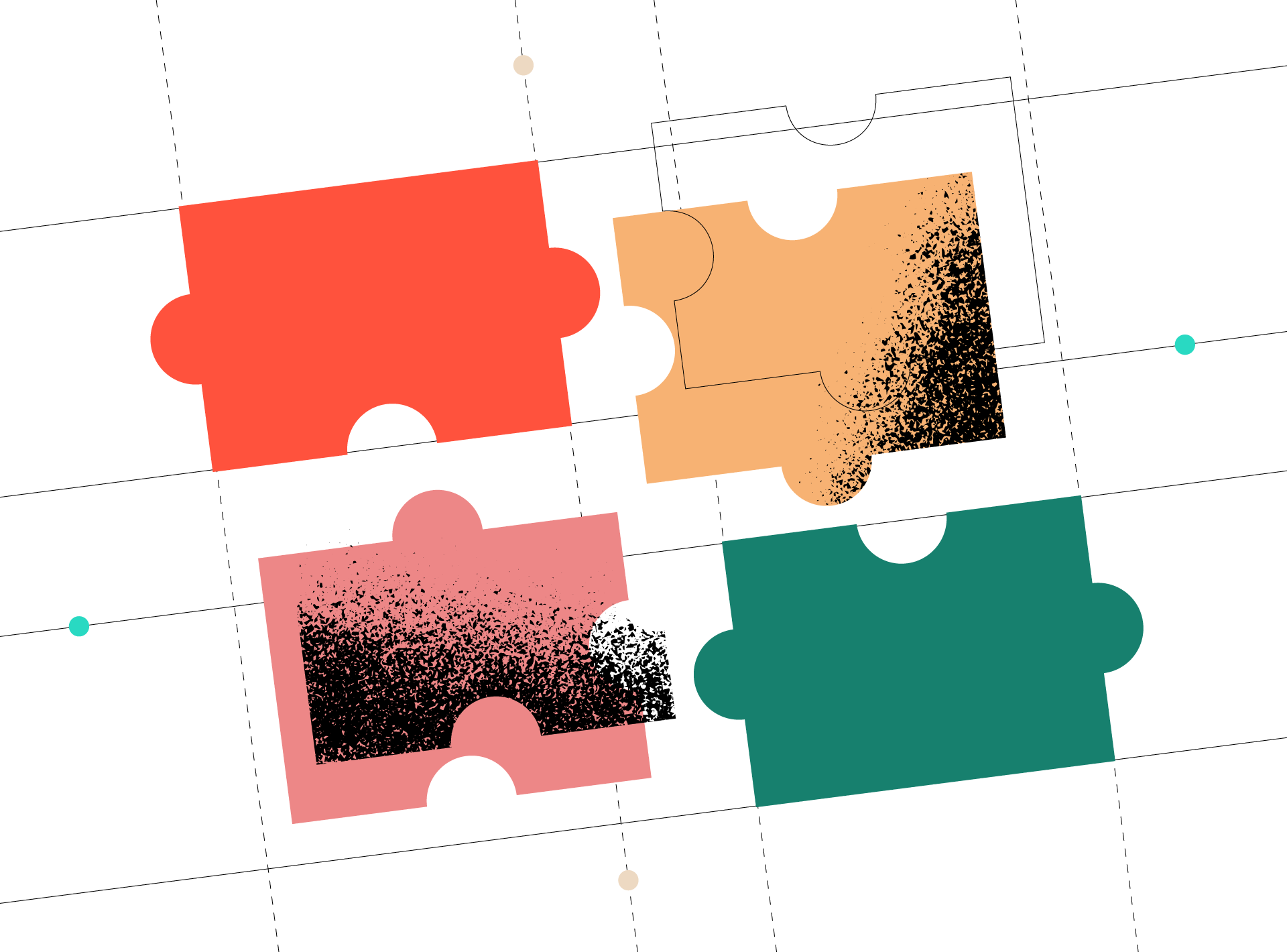A brand system is a collection of all the visual elements relating to your brand. Even if it is obvious, not everyone knows what a good brand system should consist of in order to use it effectively. This is what we will reveal today.
There are many elements that constitute a brand. Some of them are tangible and measurable, while others refer to something abstract like brand values and the company’s mission. Today, we’re going to talk about an element that’s very tangible – a brand system (frequently referred to as a brand identity system). For a brand system to be good, all these elements must work together and complement each other. The goal is obvious; every brand identity system should be designed to show brand consistency. After all, it constitutes a representation of your brand.
Why do you need a brand system?
Actually, having a brand system is a prerequisite to developing a recognised and valued brand. For starters, with a brand system, you can actually show your brand in every channel – from a website to your products and billboards.
Secondly, a well-designed brand system gives you a visual (and to some extent conceptual as well) roadmap when it comes to developing your brand. Thanks to that, you can understand how to communicate your brand and craft a narrative about it.
Thirdly, it is the only way to offer your customers a clear and consistent experience with your brand. That’s why global brands like Nike, Apple, and Mercedes have been using the same logo, the same colours and the same graphic elements for years. Of course, there can be some differences between countries, but in general, the basics stay the same. Whether you go to the United States or to Japan, you will see the same swoosh logo in every Nike store. That’s what a brand system is all about.
And there’s also the last reason. Having a brand system is extremely helpful when you want to introduce new brands to your portfolio. Suppose you run a company that consists (or will consist) of more than one brand. In the ideal scenario, all these brands work well together, both functionally and visually. That’s what a brand system ensures.
Now that you know what a brand system is and what it’s for let’s look at all the crucial elements that constitute it.
What elements constitute a brand system?

Logo
That element is at the very centre of whatever you do brand-related. In your brand system, you should indicate how your logo looks, how it was designed, what are possible variations of it and how it can and cannot be used.
Colour palette
Perhaps you’ve already heard that each colour evokes specific connotations. And that’s true! The colours that you’re going to be using have to be well-thought-out. In a brand system, you should include information about what colours your brand uses (and you need exact colours listed in a specific system, e.g., Pantone).
Typography
There are four essential elements of every typography, and these are:
- Font type
- Font size
- Font-weight
- Contrast
- Spacing
Each of these four aspects of typography plays a valid role and can influence the way people perceive your brand. They also play an important role as a visual element that can elevate the design of your brand and encourage people to engage with your brand.

Imagery
Images (photographs, graphics, illustrations, filters, patterns, and iconography) also contribute to the way people perceive your brand. You need to develop a specific artwork style and use it in a consistent way in any medium you appear. For example, if you have a serious brand and position yourself as an expert in a highly technical field, you are unlikely to use goofy cartoon characters in your imagery instead of real portraits. And this tone should be maintained across your other visual/imagery elements. It’s a similar story to iconography, which refers to all the icons and symbols used in relation to your brand. Make sure they are understandable and don’t evoke any unwanted connotations. What’s more, iconography should show how these icons should be presented in different situations.

Interactive elements
In the digital world, the way the website interacts with the user is also a part of a broadly understood brand system. Craft digital experiences and memorable interfaces for your customers. UI&UX are both important here.
Audio and video elements
Think of the way your brand sounds and behaves in rich media. Here, probably the best example is Intel with their brand sound recognised all over the world:
Of course, other companies have their specific sounds, too, e.g., T-Mobile and McDonald’s. It’s also (or at least should be) a part of a brand system.
Tonality
Finally, the tonality that comes from all the previous elements. It’s used in every single brand touchpoint and can be conveyed through more elements than just text and voice. Tonality is how your business comes across to customers when communicating, just like a conversation with a real person. It is completely different for Starbucks (through its employees, of course) to communicate with you by name than it is for banks or insurance companies, for example. The tone in which you communicate with your audience also speaks of who you are and what you are like, that’s why it is worth considering.
Summary
Let’s sum up quickly. If you want to grow a company that’s recognised and understood all over the world, a company that’s valued for its consistency – you need a brand system. A collection of graphic elements and brand guidelines on how your brand should be presented in different situations and contexts. If you need help with creating a brand identity system for your company, the Admind team is at your service! Just reach out and tell us what we can do together!

